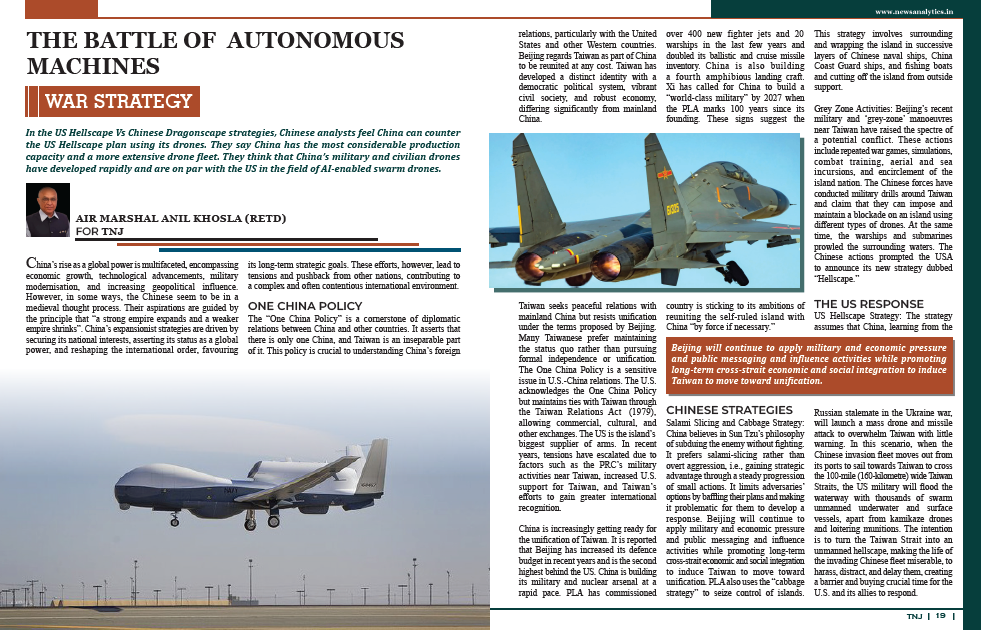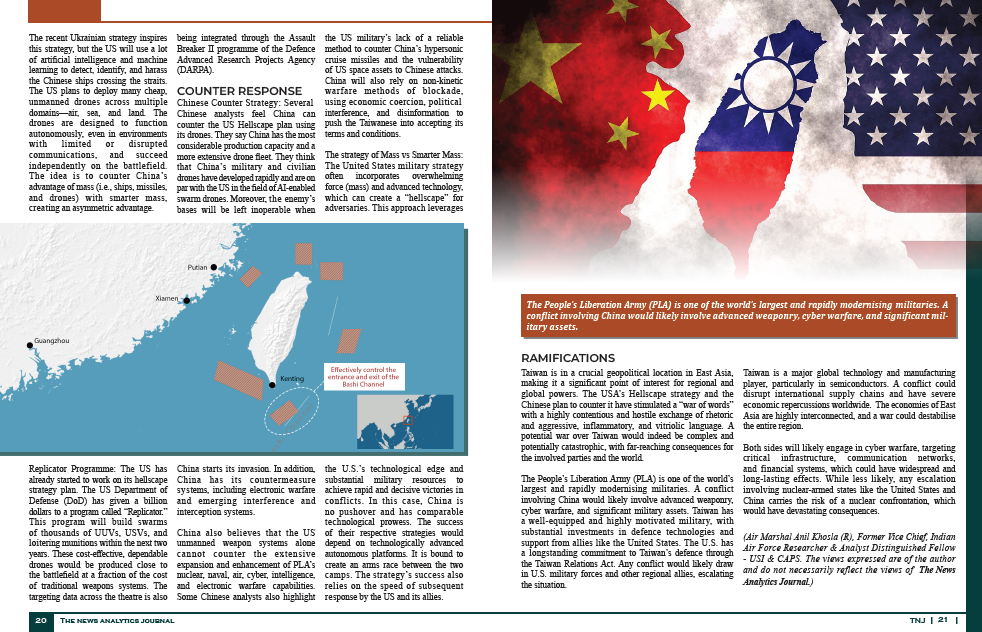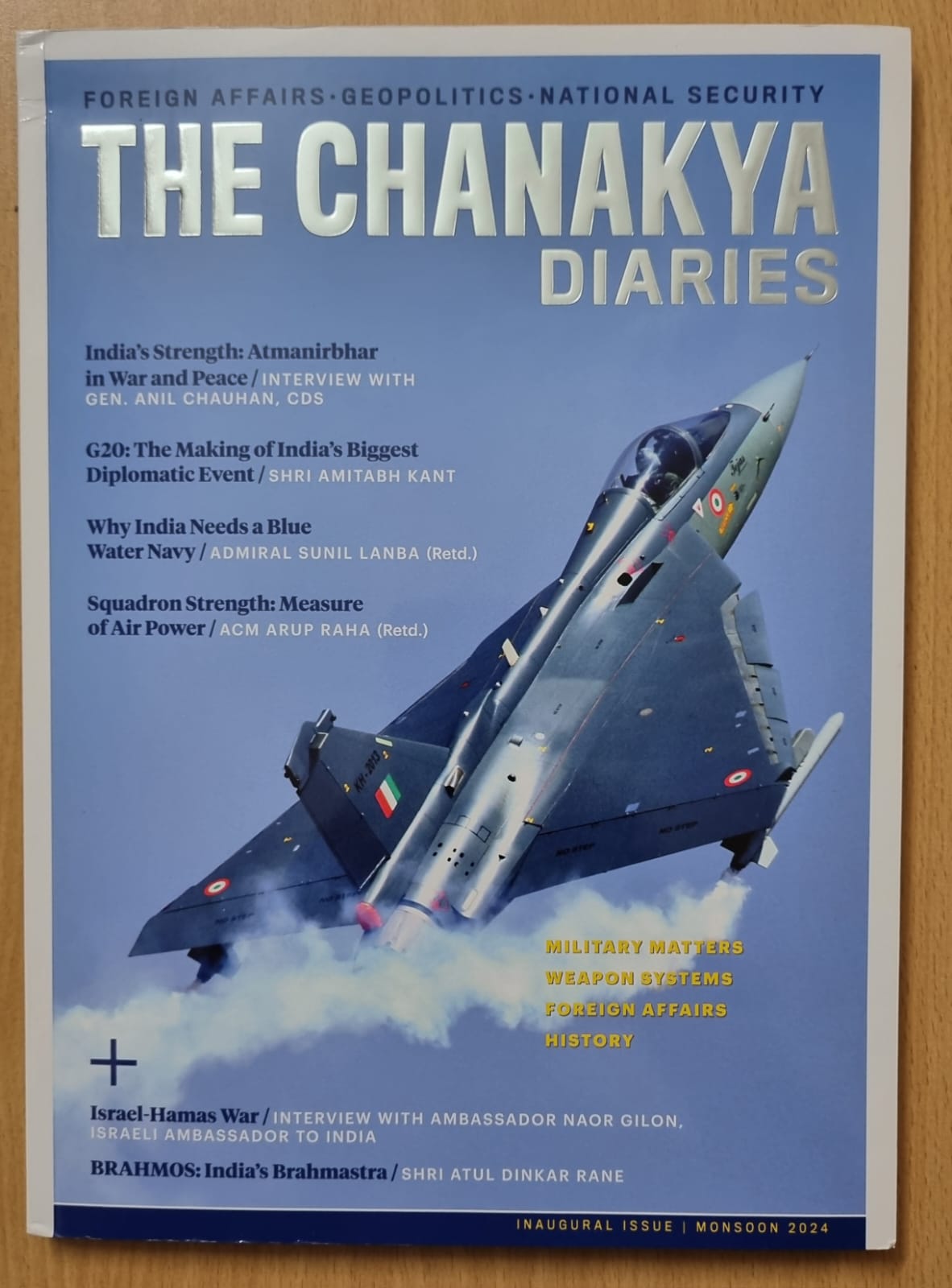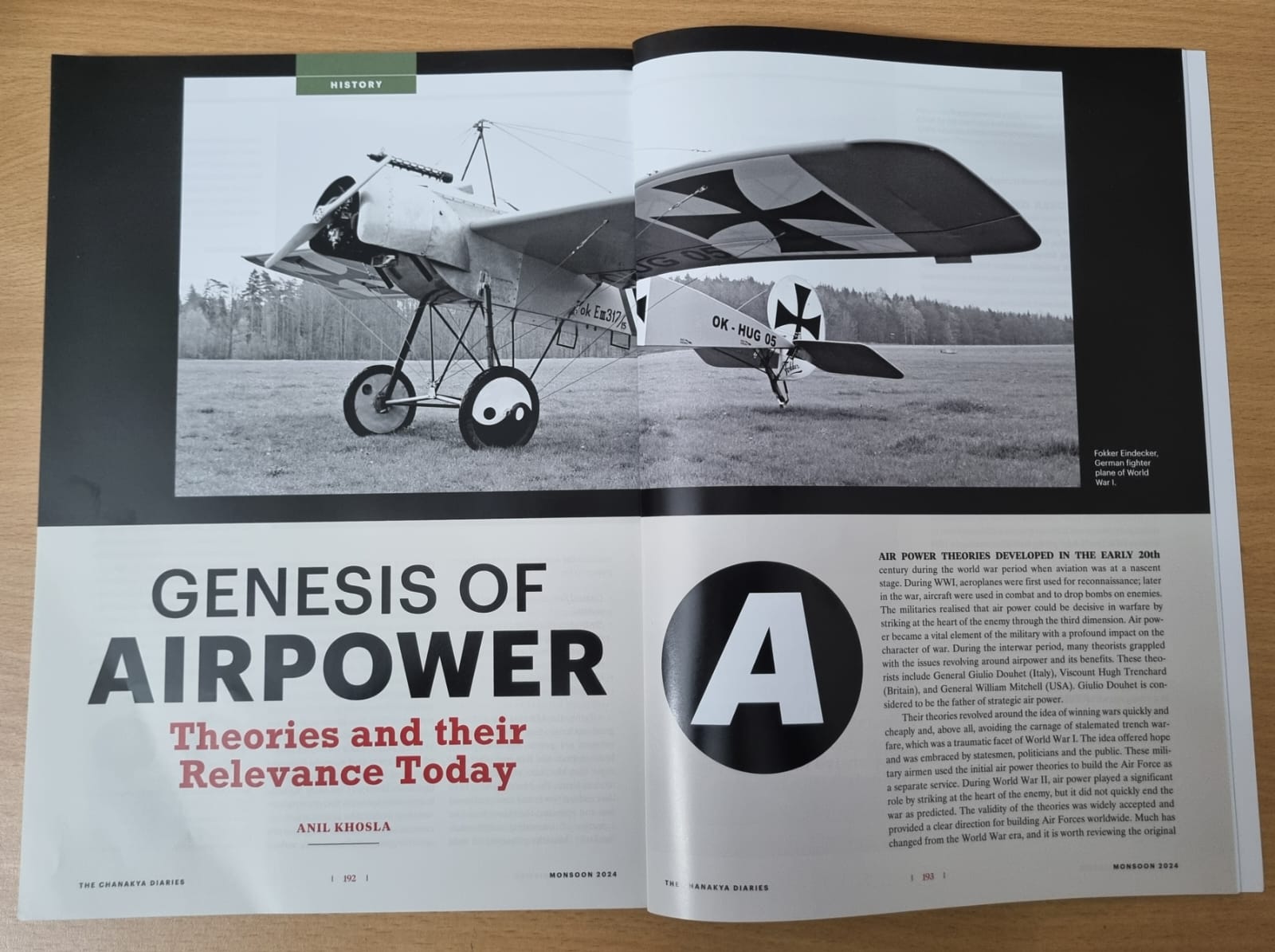
My Article published on the Chanakya Forum
India’s largest international air exercise, Exercise Tarang Shakti 2024, is in progress. Phase I at Sulur Airbase has been completed, and phase II is now underway. Military exercises are an important part of military cooperation and defence diplomacy. Worldwide, about 100-plus military exercises are conducted every year. These are bilateral or multilateral and vary in objectives, complexity, participation and duration. Indian participation in military exercises has increased in the last two decades. The IAF engages 25-odd countries bilaterally or multilaterally. Tarang Shakti, the largest international air exercise hosted by India, is a testament to the IAF’s role in international military diplomacy. The international air exercise involving air forces from multiple countries would enhance strategic relations, improve interoperability, and showcase India’s indigenous defence technologies.
The IAF, as a host of multinational exercises, plays a crucial role in fostering international military cooperation and diplomacy. This role demonstrates India’s growing influence in the global military arena and showcases its capabilities in organising and executing such complex exercises. The IAF has conducted and participated in several in-house exercises (without foreign participation). These include the air force level exercise Gaganshakti, the Airpower demonstration-wide exercise Vayushakti, the Tri-service exercise Bharat Shakti, the Multi-Agency Disaster response exercise Pralay Sahayam, and DANX (Defence of Andaman & Nicobar Exercise). International participation has picked up pace in the last two decades. The IAF has participated in over 90 international air exercises in the 21st century with almost all the leading Air Forces in the world (a list of these exercises is appended). These exercises advanced gradually from bilateral single-service exercises to multi-national multi-service exercises. In recent years, there has been a marked upturn in the complexity of these exercises. The experience gained by the IAF has paid enormous dividends of knowledge and experience.
Exercise Tarang Shakti

Exercise Tarang Shakti, a significant event in the global military arena, is the largest multilateral air exercise ever conducted and hosted by India. It is being held in two phases, with the first phase taking place at Sulur airbase in Tamil Nadu from August 6 to 14 and the second phase, currently underway at Rajasthan’s Jodhpur from 29 August to 14 September. A defence exposition has also been planned as part of this historic exercise.
The Tarang Shakti exercise has attracted the attention of air forces from fifty-one friendly foreign countries, with nearly 30 of them actively involved with their assets or as observers. The diversity of participating countries is a testament to the global significance of this exercise, with ten nations, including France, Germany, Spain, the United Kingdom, Australia, Bangladesh, Greece, Singapore, UAE, and the USA, committing their assets. The remaining countries are attending as observers to gain insights into the operations and strategies. Notably, Greece is participating in an Indian military exercise for the first time, while Russia and Israel are unable to participate due to their ongoing wars. The air chiefs of seven participating countries are expected to arrive on 11 Sep.
The Exercise features a wide array of advanced military aircraft and assets. Advanced aircraft such as Eurofighters, Typhoons, Rafales, F-18s, A-18s, C-130s, F-16s, A-10s, KC-130s, and KC-135s from countries like the USA, UAE, Singapore, France, and Germany are flying over the Indian skies during the exercise. The Indian Air Force’s LCA Tejas, Mirage 2000, Su-30, Jaguars, Mig-29, Rafale, IL-78, AWACS, LCH Prachand, Dhruv, and Rudra helicopters are participating in the exercise.
The first part at Sulur airbase, from 06 Aug to 14 Aug 24, saw Germany, France, Spain, and the UK with their assets. Phase two at Jodhpur involves the participation of Australia, Greece, Singapore, the UAE, and the US with their assets. At the last minute, Bangladesh opted not to deploy its C-130 aircraft. However, Sri Lanka stepped in to participate with its C-130 aircraft. Air Chiefs of seven countries will witness the exercise on 11 Sep. A defence expo is planned for 12-14 Sep. 17 observer countries, including Argentina, Botswana, Egypt, Italy, Malaysia, and Saudi Arabia, will also be part of the exercise.
Exercise Tarang Shakti aims to achieve several key objectives. It seeks to strengthen strategic relationships with friendly foreign countries and enhance coordination and understanding among the air forces, which is crucial for joint operations and missions. The exercise also aims to boost Interoperability, allowing participants to learn best practices, operational strategies, and techniques from each other. It facilitates professional exchange and knowledge sharing on modern aerial combat techniques, tactics, and strategy. Moreover, the exercise serves as a platform to showcase India’s Indigenous capabilities, including the participation of indigenous platforms and systems and the contributions of Indian defence companies during the defence expo. The expo aims to attract international attention and foster collaborations in defence production by defence personnel from participating countries visiting and interacting with Indian defence companies. The over-arching aim is to build mutual trust, explore avenues for interoperability and learn new things from each other.
These multi-national military exercises are not just about strengthening foreign policy and diplomatic initiatives, enhancing strategic relations, and building stronger defence partnerships. They are also a powerful tool for strategic signalling, with their stated objectives, participants, scale, location, and time further determining their significance. They foster military ties among the participating nations and significantly promote mutual understanding and cooperation in defence strategies and operations. Multilateral air exercises expose participants to various operational training scenarios, combat roles, and missions. They further offer possibilities for cooperation in humanitarian assistance, disaster relief, evacuation, and logistic support, among other things. The participants gain immensely from their diverse exposure to technology, administrative, maintenance, HR and logistics practices, besides tactics, strategy and doctrines.
Intricacies of International Military Exercises

International military exercises are complex and multifaceted operations that involve multiple nations working together to improve their military capabilities, foster cooperation, and ensure collective security. These exercises range from large-scale, multinational manoeuvres to smaller, bilateral training operations. The complex intricacies of international military exercises require a careful balance of strategic, operational, and diplomatic considerations to achieve their objectives effectively.
-
- Diplomatic Coordination. The success of these military exercises hinges on extensive diplomatic coordination. This strategic task aligns objectives, rules of engagement, and communication protocols. Some exercises are conducted to send strategic messages to adversaries or to reassure allies. The choice of location, timing, and participating nations can be politically sensitive and might influence international relations.
-
- Legal Framework. The legal framework is a critical component of these exercises. Agreements and MOUs are required to define the legal status of foreign military personnel operating within a host country’s borders. These would cover issues like jurisdiction, taxation, weapons carrying, etc.
-
- Logistics and Supply Chain. Moving military personnel, equipment, and supplies across international borders requires intricate logistical planning. This includes transportation, fuel, food, medical supplies, and spare parts.
-
- Operational Planning and Execution. The primary objective is for different countries’ forces to work together effectively. This involves meticulous planning and execution, standardising communication systems, command structures, and procedures. Exercises often simulate various scenarios, including assaults, air defence, cyber warfare, humanitarian assistance, and disaster relief. Each scenario requires detailed planning and execution.
-
- Intelligence Sharing. Participating nations often share sensitive information to support the exercise’s objectives. This requires a high level of trust and secure communication channels.
-
- Cyber Security. Protecting the exercise from cyber threats is crucial, as adversaries might attempt to disrupt operations or gather sensitive information. Cyber defence drills are sometimes integrated into the exercise.
-
- Safety Protocols. Ensuring the safety of all participants is paramount, particularly in exercises involving live firing or complex manoeuvres. This requires rigorous safety protocols and real-time monitoring.
-
- Language Differences. Effective communication is critical, and language differences can pose significant challenges. Many exercises use English as the standard operational language, but translation and interpretation services are often required.
-
- Cultural Sensitivity. Understanding and respecting partner nations’ cultural practices and norms is vital for maintaining cohesion and preventing misunderstandings.
-
- Media Coverage. International exercises often attract media attention, and how they are portrayed can influence public perception. Managing information release and media coverage is a crucial aspect of these exercises.
-
- Propaganda and Misinformation. Adversaries may use propaganda or misinformation to undermine the exercise’s objectives. Countering this requires a proactive public affairs strategy.
-
- Environmental Impact. Large-scale exercises can have significant ecological impacts, including disruption of local ecosystems. Mitigating these effects is a critical planning consideration.
-
- Post-Exercise Review. This is crucial because it assesses performance, identifies strengths and weaknesses, and develops recommendations for future exercises. The lessons learnt are used to refine tactics, techniques, and procedures and to improve interoperability in future operations.
Significant global participation in exercise Tarang Shakti underscores India’s growing power on the global stage and unwavering commitment to bolstering regional and international security. The exercise, a testament to India’s military prowess, is a powerful signal of its reliability as a partner in the global security system. A long-term plan should be charted out for participation and hosting of the military exercises. A balance must be maintained regarding scope, objectives and participants, considering the advanced countries, countries of interest and neighbours. While the bilateral single-service exercises have advantages, multi-national, multi-service and multi-domain exercises bring out valuable lessons about realistic and comprehensive ways of dealing with contemporary situations.

List of IAF Participation in International Exercises.
- Red Flag Alaska (USA, multinational).
- Cope India / Cope Thunder (India, USA).
- Avia India / Indira (Russia, India).
- Exercise Pitch Black (Australia, Multinational).
- Exercise Garuda (France).
- CobraWarrior (UK, multinational).
- Indradhanush (India, UK).
- Exercise Blue Flag (Israel, Multinational)
- Iniochos (Greece, multinational).
- SINDEX (India, Singapore).
- Exercise Desert Eagle (India, UAE).
- Exercise Eastern Bridge/Desert Bridge (India, Oman).
- Siam Bharat (India, Thailand).
- Shinyuu Maitri (India, Japan).
- Exercise DesertKnight (India, France, UAE).
- ExerciseDesert Warrior (India, Egypt).
Suggestions and value additions are most welcome.
Link to the article on Chanakya Forum:-
EXERCISE TARANG SHAKTI: INTRICACIES OF MULTI-NATIONAL MILITARY EXERCISES
For regular updates, please register here:-
References and credits
To all the online sites and channels.
References
- Anchit Gupta and Angad Singh, “Diffidence to Strength: Multinational Air Exercises in Indian skies”, Indian History, 03 Aug 2024.
- Air Marshal (Dr) Diptendu Choudhury (Retd) PVSM, AVSM, VM, VSM, “The Rising Wave of Air Power -Exercise Tarang Shakti”, 25 Aug 2024.
- Air Marshal Anil Chopra, “Mother Of All IAF Exercises! After 61 Years of Post China War, India Begins Its 2nd Ever Multilateral Drills ‘Tarang Shakti’”, The EurAsian Times, 06 Aug 2024.
- Nigam Sharma, “Exercise Tarang Shakti 2024: Everything You Need to Know”, 05 Aug 2024.
- Anurag Roushan, “’Tarang Shakti’: India set to host its largest multinational air exercise, 51 countries invited”, India TV News 01 Aug 2024.
- “‘Tarang Shakti’, largest multilateral air exercise in India”, PTI, 31 Jul 2024.
- Shivani Sharma, “Bangladesh opts out of multinational air exercise Tarang Shakti, Sri Lanka steps in”, India Today, 30 Aug 24.
Disclaimer:
Information and data included in the blog are for educational & non-commercial purposes only and have been carefully adapted, excerpted, or edited from reliable and accurate sources. All copyrighted material belongs to respective owners and is provided only for wider dissemination.












